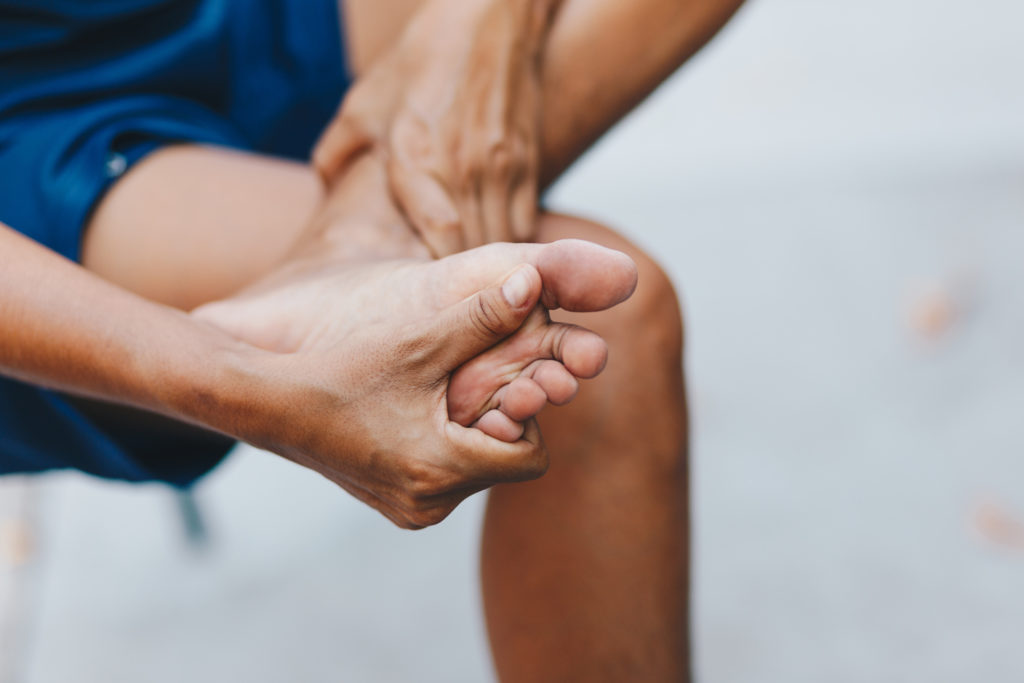Diabetes is a disease that impacts millions of people in the United States. It’s estimated that over 20 million individuals have been diagnosed with type 1 or type 2 diabetes. This number represents a significant portion of the population, which means many people are at risk for issues if foot care is not a priority.
Managing Diabetes is complex, and managing when Diabetes affects your feet and legs can be even more difficult. Calluses, corns, bunions, blisters, and ulcers are all common in patients with Diabetes. In addition, high blood sugar levels can make these minor injuries and alterations much worse. Blood glucose levels that are too high can also lead to potentially disabling infections.
You can take several steps listed below to help keep your feet in good shape, including wearing diabetic-friendly footwear, having regular foot exams with a local podiatrist, and doing daily foot inspections.
1. Support Your Feet With Diabetes-Friendly Footwear and Socks
When you have Diabetes, looking for new shoes can be a little more complicated. Comfort and safety are your main priority when shoe shopping. Wear shoes that are comfortable and protect your feet from getting hurt or infected. Try not to wear high heels, open-toed shoes, flip-flops, or sandals, as they can cause injuries and infections. It would be best to look for shoes with deep toe boxes, good coverage of both the top and bottom, and without seams inside the shoe that will rub on your feet.
Also, change your socks every day. Wear natural materials such as cotton, wool, or a cotton-wool blend. Likewise, it’s important to find socks without seams, and the best ones are made from cotton and are padded. Finding socks with moisture control is also a great idea to properly care for your feet as a person with Diabetes.
2. Inspect Your Feet Every Day for Cracks, Wounds, and Sores
Diabetic neuropathy can allow injuries to your feet that you don’t feel. This means it’s important to check your feet every day to look for signs of injury. These tips will make your inspection a breeze.
- Try to make this a daily task, performed around the same time every day.
- Use good lighting so you can spot any foot problems.
- Use a mirror to check the bottom of your feet.
- Look for any redness, bleeding, cuts, swelling, or sores.
- Observe any dry or cracked skin on the top and bottom of your feet.
- Watch for ingrown toenails, calluses, or corns.
If you observe anything out of the ordinary or any foot issues listed above, contact Fox Podiatry to chat with our experienced team.
3. Don’t Go Barefoot, Whether You’re Inside or Outside.
It seems like a “no-brainer,” but walking barefoot increases the chances of a foot injury. Those with diabetic neuropathy may have poor feeling in their feet, so you might step on something dangerous without knowing it.
You should also wear comfortable footwear at home, like a nice pair of house slippers or slide to provide your feet with proper protection. Walking around your home without footwear puts your feet at risk for minor cuts, penetration, or scrapes by wooden splinters, shards of glass, a misplaced sewing needle, or thumbtack.
Before putting shoes on, check inside the shoe to ensure there is nothing sharp impaled in the sole or inside the shoe that could injure your feet.
4. Clean and Thoroughly Dry Your Feet to Reduce the Risk of Infection
You might not shower every day, but your feet should always be clean. Dirty feet are more likely to contract an infection, so cleanliness is key. Try to wash and dry your feet thoroughly after a long day. As a Diabetic, drying your feet completely is imperative because your skin can stay moist and break down–possibly leading to an infection.
After drying off your feet, be sure to apply a proper moisturizer to the tops and bottom of your feet to prevent dry and cracked feet. Be sure to leave the area between the toes lotion-free. Why? Lotion can increase your chances of fungal growth between your toes.
This tip also goes for sweaty socks and shoes after a workout. Remove them right away to deter infection!
5. See a Podiatrist Regularly for Foot Care
Foot care is essential–if you have Diabetes, don’t wait to treat your feet if you notice an issue. Even seemingly harmless calluses may become problems if you ignore them. Your care team should include an experienced podiatrist like Dr. Fox and his team in Silver Spring, MD. Self-treating foot issues by heading to the local pharmacy for an over-the-counter product can be more harmful than beneficial. Those products are the shelf can be irritating and can even increase your risk of infection during the treatment.
Report any foot problems or changes to your podiatrist and follow their advice.
Fox Podiatry is Here For Your Diabetic Foot Care Needs
Diabetic foot care is a vital part of living with that condition. If you have Diabetes, your risk of complications from foot problems is higher. Use our tips to take special care of your feet to avoid serious complications. If you need help with your foot issues, don’t hesitate to get in touch with us at 301-589-7663 to schedule an appointment. Our team of Podiatry experts in Silver Spring, MD, can help keep your feet healthy and strong.


My uncle has diabetes, so he is worried about the wound he got on his left foot after accidentally stepping on broken glass shards this morning. I appreciate your tip when you told us to make sure we keep our feet dry and clean at all times if we have diabetic feet to help reduce the risk of infection since keeping them moist will increase the chances of contracting it. I’ll take note of this while I accompany my uncle to see a podiatrist soon for his diabetic foot care.